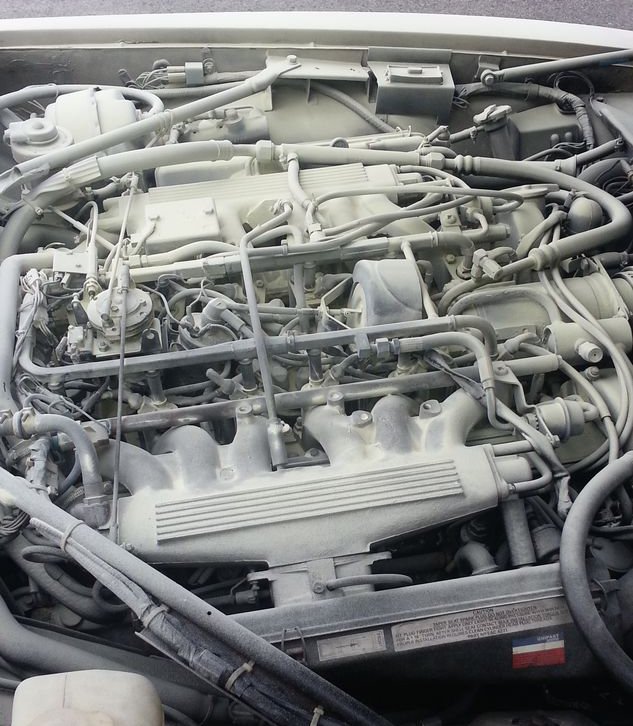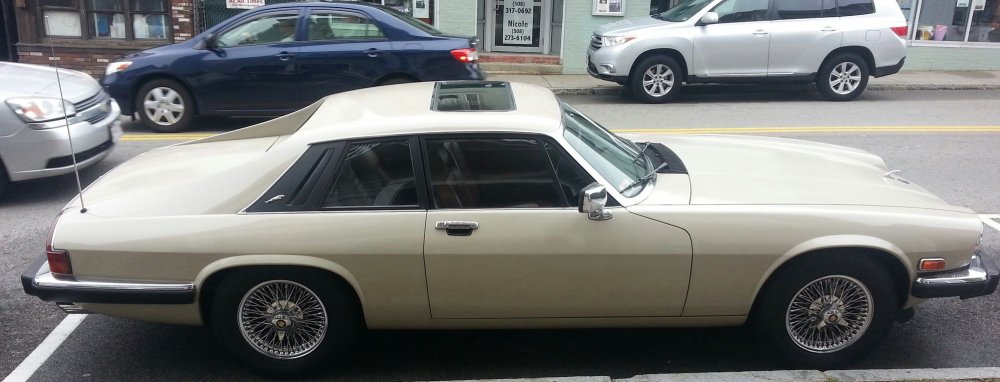Jaguar XJS V12 Engine Fire – A Warning to Owners
If you own a Jaguar XJS with the V12, make sure to check the condition of your fuel lines regularly.
JaguarForums member Anglicomarine0326 recently shared a story about his 1986 Jaguar XJS V12 which serves as the nightmare for all car lovers. His sleek British coupe was leaking fuel and when he began investigating the issue, the car burst into flames. Fortunately, the fire was contained to the engine bay and the classic Jag was saved when a Good Samaritan ran to the rescue with a fire extinguisher, but there is an important lesson to be learned here.
Here is the OP’s explanation of what happened to his clean 1986 XJS:
“Parked my 86 XJS V12 coupe the other day. My wife noticed fluid on the ground. I touched it and smelled it…gasoline! Not knowing if it was from me or another vehicle (public parking space) I restarted my car and opened the hood. A stream of gasoline was observed spewing from a split injection hose. It immediately ignited to my horror. As I dialed 911, a person exited a nearby store with a fire extinguisher. I put it out within 25 seconds. I’m waiting to hear from my Insurance company if it’s a total loss. It needs a wiring harness, wire set, distributor cap, fuel rail hoses and maybe injectors? This combined with labor at 100 an hour, may be the kiss of death? NADA and Haggerty value car at 10,000 minimum. Car is mint in/out, 80,000 miles and Dayton Wire Wheels, knockoff type.
I’m at mercy now of the insurance adjuster and estimate. A word to the wise…CHECK your fuel rail injection hoses and couplings. They dry out and crack. It was going to be my next project.”
 He also included the image of his engine bay after the fire was put out. The powder covering every square inch of the under-hood area. Forum members were quick to post their condolences while agreeing that the fuel lines can prove to be a problem, and that is the lesson to be learned here.
He also included the image of his engine bay after the fire was put out. The powder covering every square inch of the under-hood area. Forum members were quick to post their condolences while agreeing that the fuel lines can prove to be a problem, and that is the lesson to be learned here.
The fuel lines leading to the fuel rails of 1986-era Jaguar XJS V12 are made from rubber and over time, that rubber dries out and cracks. Because of that, experienced owners recommend that new owners change the lines immediately while monitoring their condition from time to time.
Good News for the Owner
While this was surely a miserable experience for the OP, he did have some good news from the insurance company on his XJS:
“State Farm agreed to pay my mechanic his initial estimate of $5300.00 to fix it! Wiring harness (From SNG Barratt) distributor, wire set, alternator, and various other things plus labor. I had a good appraiser who agreed my car with 80,000 miles, fresh paint and Dayton Wire knock offs was worth fixing. Thank you Haggerty Insurance Valuation Tool and NADA Classic price guide. XJS prices are increasing every year. Both guides value an 86 XJS in average condition at over 10 Thousand bucks. My car is well above average in very good rust free condition. Parts ordered….Driving a KIA from Hertz…nice but no Big Cat!”
So in the end, this super-clean 1986 Jaguar will be repaired, but everyone should learn from this unfortunate story and keep an eye on those fuel lines.

